#Philippa of Lancaster
Explore tagged Tumblr posts
Text

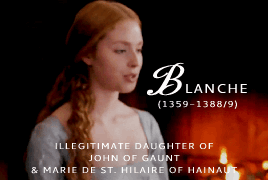
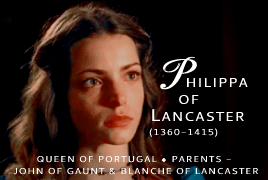
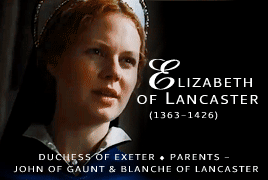
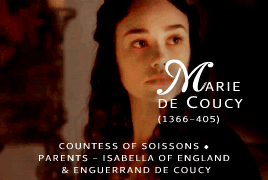

ROYALTY MEME | Granddaughters of Edward III & Philippa of Hainault (part one)
through their children: Lionel of Antwerp, John of Gaunt, and Isabella of England
#historyedit#historicwomendaily#philippa plantagenet#philippa of lancaster#elizabeth of lancaster#marie de coucy#philippa de coucy#edward iii#philippa of hainault#history#women in history#weloveperioddrama#cortegiania#userperioddrama#perioddramaedit#userbennet#perioddramasource#onlyperioddramas#*royalty meme#my edit
114 notes
·
View notes
Text




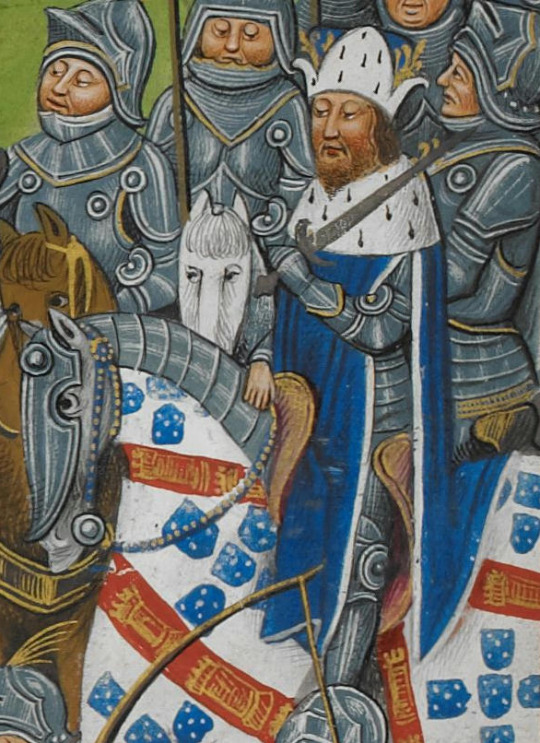

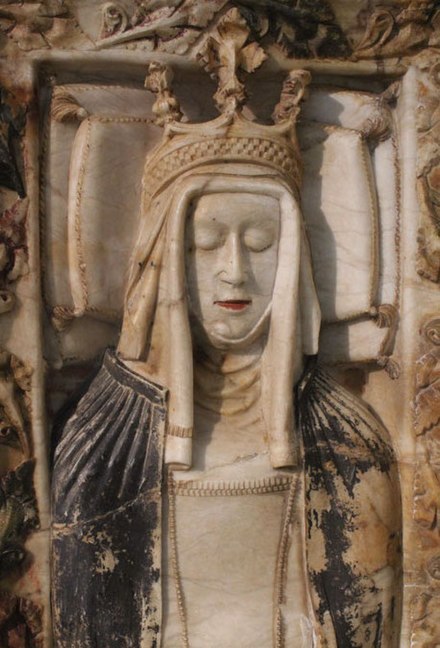


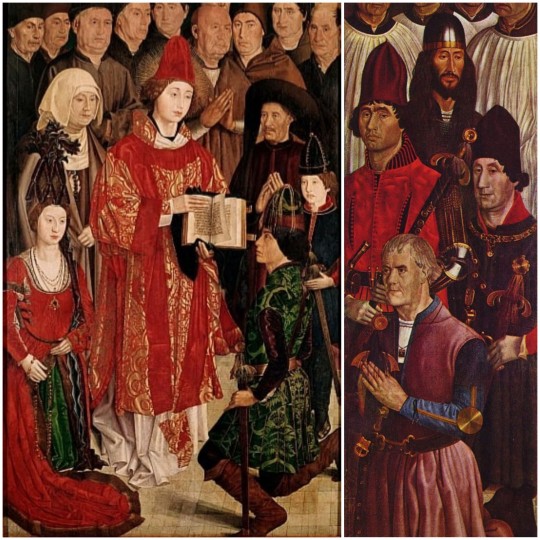
The Bastard Kings and their families
This is series of posts are complementary to this historical parallels post from the JON SNOW FORTNIGHT EVENT, and it's purpouse to discover the lives of medieval bastard kings, and the following posts are meant to collect portraits of those kings and their close relatives.
In many cases it's difficult to find contemporary art of their period, so some of the portrayals are subsequent.
1) John I of Portugal (1357 – 1433), son of Peter I of Portugal and Teresa Lourenço; with his wife, Philippa of Lancaster (1360 – 1415), daughter of John of Gaunt and his wife Blanche of Lancaster
2) His father, Peter I of Portugal (1320 – 1367), son of Afonso IV of Portugal and his wife Beatrice of Castile
3) His sister, Beatrice of Portugal (c. 1354–1381), daugther of Peter I of Portugal and his wife Inês de Castro
4) His brother, John of Portugal (1352 – c. 1396), son of Peter I of Portugal and his wife Inês de Castro
5) His brother, Ferdinand I of Portugal (1345 – 1383), son of Peter I of Portugal and his wife Constanza Manuel de Villena
6) His sister in law, Leonor Teles de Meneses (c. 1350 – c. 1405), daughter of Martim Afonso Telo de Meneses and his wife Aldonça Eanes de Vasconcelos
7) His niece, Beatrice of Portugal (1373 –c. 1420), daughter of Ferdinand I of Portugal and his wife Leonor Teles de Meneses
8) His niece, Isabella of Portugal (1364–1395), daughter of Ferdinand I of Portugal and an unknown woman
9) His daughter with Philippa of Lancaster, Isabella of Portugal (1397 – 1471)
10) Left:
I. Eleanor of Aragon (1402 – 1445), daughter of Ferdinand I of Aragon and his wife Leonor de Albuquerque; and wife of Edward I of Portugal
II. Isabella of Coimbra (1432 – 1455), daughter of Peter of Portugal and Isabella of Urgell; wife of Afonso V of Portugal
III. Edward I of Portugal (1391 – 1438), son of John I of Portugal and his wife Philippa of Lancaster
IV. John II of Portugal (1455 – 1495), son of Afonso V of Portugal and his wife Isabella of Coimbra
V. Afonso V of Portugal 15 (1432 – 1481), son of Edward I of Portugal and his wife Eleanor of Aragon
Right:
I. Ferdinand of Portugal (1402 – 1443), son of John I of Portugal and his wife Philippa of Lancaster
II. John of Portugal (January 1400 – 1442) son of John I of Portugal and his wife Philippa of Lancaster
III. Peter of Portugal (1392 – 1449), son of John I of Portugal and his wife Philippa of Lancaster
IV. Henry of Portugal (1394 – 1460), son of John I of Portugal and his wife Philippa of Lancaster
Note: In the last picture, the Panel of the Prince or the Infante and the Panel of the Knights from Nuno Gonçalves' St. Vincent Panels, the identity of some of the members of the Royal family it's still discussed, like the man identified as Edward I in the Panel of the Prince is his brother Henry, but we're considering the interpretation of the people of the panel being Afonso V with his parents, wife and heir, and the ones of the Panel of the Knights are Edward I's brothers, although by the time the panels were painted most of them have already died.
#jonsnowfortnightevent2023#asoiaf#a song of ice and fire#day 10#echoes of the past#historical parallels#medieval bastard kings#bastard kings and their families#john i of portugal#philippa of lancaster#peter i of portugal#ferdinand i of portugal#beatrice of portugal#john of portugal#isabella of portugal#eleanor of aragon#edward i of portugal#john ii of portugal#afonso v of portugal#leonor teles de meneses#isabella of coimbra#peter of coimbra#canonjonsnow
13 notes
·
View notes
Text
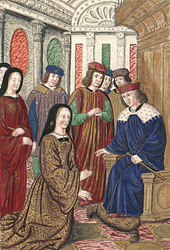
Isabel of Portugal (only daughter of Queen Philippa of England and King João of Portugal), Duchess of Burgundy in an encounter with King Charles VII of France.
#house of avis#house of valois#duchess of burgundy#Isabel of Portugal#Isabella of Portugal#house of lancaster#Philippa of Lancaster#João I of Portugal#Charles VII of France
9 notes
·
View notes
Link
Philippa of Lancaster was Queen of Portugal from 1387 until 1415 as the wife of King John I. Born into the royal family of England, her marriage secured the Tre...
Link: Philippa of Lancaster
0 notes
Text
I just revised the fan art; it's not noticeable. I found some issues; I forgot to color the line of the lips, and there was a black smudge on her veil. I hope you all liked it. Thanks.
Fanart of Philippa of Lancaster and John of Portugal

Requested by my friend @catherinemybeloved
#I posted two arts in one day lmao#medieval history#history#art#medieval fanart#medieval#lancaster#portugal#look at them#look at them they are adorable#please like my art#my art <3#historical figures#my art#please like and reblog#john of portugal#philippa of lancaster#1400s#artists on tumblr
24 notes
·
View notes
Text







The White Queen — Episode Two "The Price of Power" prev.: I
#twqedit#the white queen#periodramaedit#adaptationsdaily#book adaptation#elizabeth woodville#rebecca ferguson#richard iii#anne neville#house of york#house of lancaster#margaret beaufort#amanda hale#max irons#aneurin barnard#philippa gregory#bbc one#usergif#weloveperioddrama#onlyperioddramas#violaobanion#valyrianpoem#userzaynab#byfefa#byme
240 notes
·
View notes
Text
In historical fiction and some popular histories, Edward of Lancaster is often depicted as solely the child of Margaret of Anjou. Often, this is shown through their tendency towards monstrosity or their characterisation as psychopaths. In Annie Garthwaite's Cecily, for instance, Garthwaite adapts Shakespeare's depiction of Margaret's presence as the Battle of Wakefield and adds in Margaret's "infant son" who is said to "dribble" his fingers in the dead York's blood after Margaret orders the "despoiling" of York's body. Garthwaite's version ends up a tale even more lurid and inaccurate than Shakespeare's (Margaret and Edward were in Scotland at the time of the battle). In almost all novels, Edward's name is rendered as "Edouard", often a match for his mother's name being rendered as "Marguerite d'Anjou", as if implying that Edward is not English like the strapping Edward IV or Richard III's son, Edward of Middleton, or even Edward V, but entirely French, like his mother. The so-called mystery over Edward of Lancaster's paternity (and frequent assertion that he was the result of Margaret's adultery) furthers this belief: Edward has no father, he can only be the product of Margaret producing autonomously and this renders both he and his mother monstrous. This monstrosity is sometimes further enhanced by the depiction of their relationship as incestuous (or heavily implied to be). In this essay, I will
#edward of lancaster#margaret of anjou#blog#tw incest mention#philippa gregory AND anne o'brien AND someone who wrote some smutty novels about margaret have all gone there
28 notes
·
View notes
Text

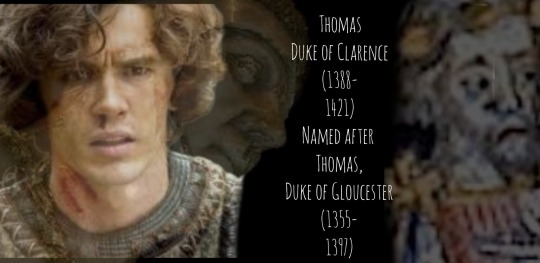

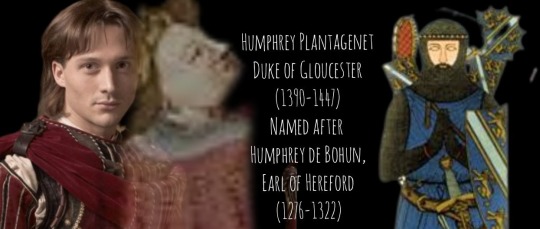
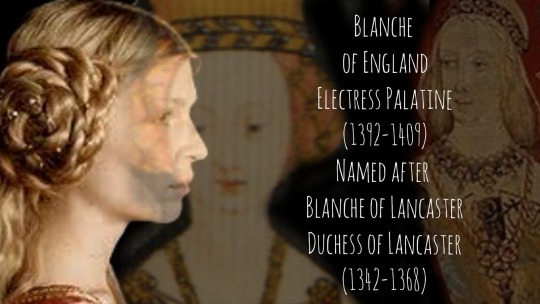
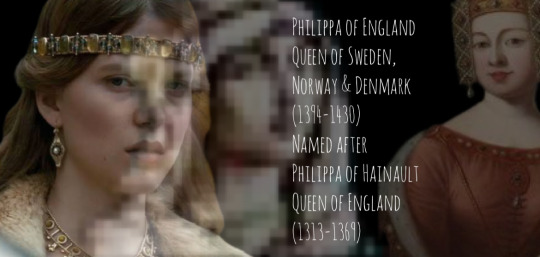
The children of Henry IV & Mary de Bohun and whom they were named after.
#house of lancaster#henry iv#plantagenet dynasty#henry iv of england#Henry V#john of bedford#Thomas of Clarence#Philippa of England#Blanche of England#humphrey of gloucester
8 notes
·
View notes
Text
Women stepped into roles of military leadership and civil authority during the disruption of the thirty years of civil war between the two rival families who described from the sons of Edward III – the houses of York and Lancaster.
"Normal Women: 900 Years of Making History" - Philippa Gregory
#book quotes#normal women#philippa gregory#nonfiction#military#leadership#civil authority#disruption#civil war#15th century#rival family#descendants#edward iii#york#lancaster#wars of the roses
2 notes
·
View notes
Text


Lancaster Legacy, round 8, rotation 1 [sun-wed] Gen 1 - Base Game
New baby! Welcome, Kieran <3
#the sims 4#ts4#ts4 gameplay#ts4 screenshot#ts4 lepacy#lancaster lepacy#lancaster g1#lancaster 8.1#philippa lancaster#kieran lancaster
2 notes
·
View notes
Text
Ages of English Queens at First Marriage
I have only included women whose birth dates and dates of marriage are known within at least 1-2 years, therefore, this is not a comprehensive list. For this reason, women such as Philippa of Hainault and Anne Boleyn have been omitted.
This list is composed of Queens of England when it was a sovereign state, prior to the Acts of Union in 1707. Using the youngest possible age for each woman, the average age at first marriage was 17.
Eadgifu (Edgiva/Ediva) of Kent, third and final wife of Edward the Elder: age 17 when she married in 919 CE
Ælfthryth (Alfrida/Elfrida), second wife of Edgar the Peaceful: age 19/20 when she married in 964/965 CE
Emma of Normandy, second wife of Æthelred the Unready: age 18 when she married in 1002 CE
Ælfgifu of Northampton, first wife of Cnut the Great: age 23/24 when she married in 1013/1014 CE
Edith of Wessex, wife of Edward the Confessor: age 20 when she married in 1045 CE
Matilda of Flanders, wife of William the Conqueror: age 20/21 when she married in 1031/1032 CE
Matilda of Scotland, first wife of Henry I: age 20 when she married in 1100 CE
Adeliza of Louvain, second wife of Henry I: age 18 when she married in 1121 CE
Matilda of Boulogne, wife of Stephen: age 20 when she married in 1125 CE
Empress Matilda, wife of Henry V, HRE, and later Geoffrey V of Anjou: age 12 when she married Henry in 1114 CE
Eleanor of Aquitaine, first wife of Louis VII of France and later Henry II of England: age 15 when she married Louis in 1137 CE
Isabella of Gloucester, first wife of John Lackland: age 15/16 when she married John in 1189 CE
Isabella of Angoulême, second wife of John Lackland: between the ages of 12-14 when she married John in 1200 CE
Eleanor of Provence, wife of Henry III: age 13 when she married Henry in 1236 CE
Eleanor of Castile, first wife of Edward I: age 13 when she married Edward in 1254 CE
Margaret of France, second wife of Edward I: age 20 when she married Edward in 1299 CE
Isabella of France, wife of Edward II: age 13 when she married Edward in 1308 CE
Anne of Bohemia, first wife of Richard II: age 16 when she married Richard in 1382 CE
Isabella of Valois, second wife of Richard II: age 6 when she married Richard in 1396 CE
Joanna of Navarre, wife of John IV of Brittany, second wife of Henry IV: age 18 when she married John in 1386 CE
Catherine of Valois, wife of Henry V: age 19 when she married Henry in 1420 CE
Margaret of Anjou, wife of Henry VI: age 15 when she married Henry in 1445 CE
Elizabeth Woodville, wife of Sir John Grey and later Edward IV: age 15 when she married John in 1452 CE
Anne Neville, wife of Edward of Lancaster and later Richard III: age 14 when she married Edward in 1470 CE
Elizabeth of York, wife of Henry VII: age 20 when she married Henry in 1486 CE
Catherine of Aragon, wife of Arthur Tudor and later Henry VIII: age 15 when she married Arthur in 1501 CE
Jane Seymour, third wife of Henry VIII: age 24 when she married Henry in 1536 CE
Anne of Cleves, fourth wife of Henry VIII: age 25 when she married Henry in 1540 CE
Catherine Howard, fifth wife of Henry VIII: age 17 when she married Henry in 1540 CE
Jane Grey, wife of Guildford Dudley: age 16/17 when she married Guildford in 1553 CE
Mary I, wife of Philip II of Spain: age 38 when she married Philip in 1554 CE
Anne of Denmark, wife of James VI & I: age 15 when she married James in 1589 CE
Henrietta Maria of France, wife of Charles I: age 16 when she married Charles in 1625 CE
Catherine of Braganza, wife of Charles II: age 24 when she married Charles in 1662 CE
Anne Hyde, first wife of James II & VII: age 23 when she married James in 1660 CE
Mary of Modena, second wife of James II & VII: age 15 when she married James in 1673 CE
Mary II of England, wife of William III: age 15 when she married William in 1677 CE
110 notes
·
View notes
Text
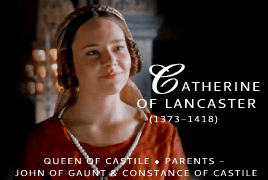
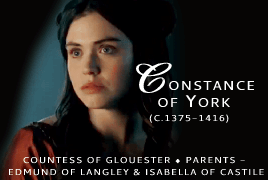
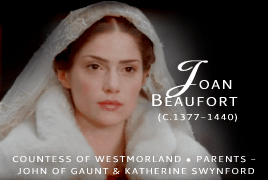
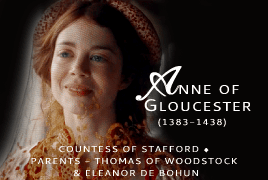
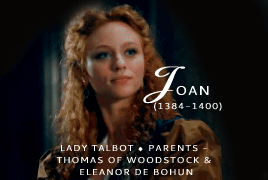
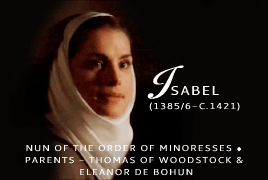
ROYALTY MEME | Granddaughters of Edward III & Philippa of Hainault (part two) / (part one)
through their sons: John of Gaunt, Edmund of Langley, and Thomas of Woodstock
#historyedit#historicwomendaily#catherine of lancaster#constance of york#joan beaufort#anne of gloucester#joan lady talbot#perioddramaedit#history#women in history#weloveperioddrama#onlyperioddramas#perioddramasource#cortegiania#userbennet#userperioddrama#edward iii#philippa of hainault#*royalty meme#my edit
105 notes
·
View notes
Text
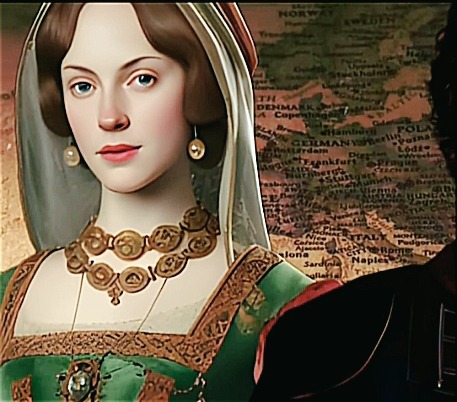
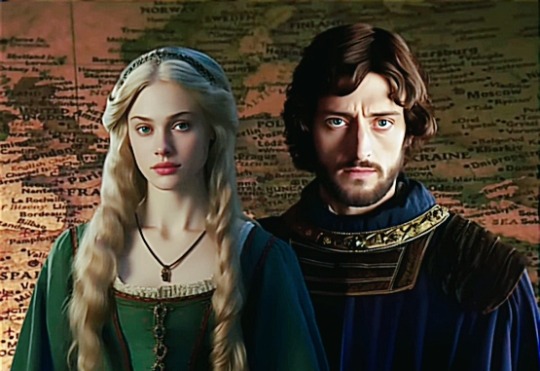
The triangle Constance of Castile, John of Gaunt and Katherine Swynford
Part One
Katherine Swynford and John of Gaunt met whilst she was in the service of his first Duchess, Blanche, as a chamber servant. During this time, the two women were on close terms, for Katherine’s own daughter, Blanche Swynford, was placed in the same chamber as both Philippa and Elizabeth – the daughters of Blanche of Lancaster – and Gaunt was appointed as her godfather. Katherine was married to one of Gaunt’s retainers, Sir Hugh Swynford, who held a manor in Kettlethorpe in Lincolnshire. Hugh Swynford suddenly died, whilst serving John of Gaunt in Aquitaine. He left Kettlethorpe in the possession of Katherine and his son and heir Thomas, who was four years old. Hugh Swynford’s land and house were part of the Duchy of Lancaster, and as his Lord, John of Gaunt dutifully ensured the welfare of his family. He employed Katherine in his household as a ‘maistresse’ – a governess – to his daughters, and appointed her sister Philippa, the wife of Geoffrey Chaucer, to serve Duchess Constance.
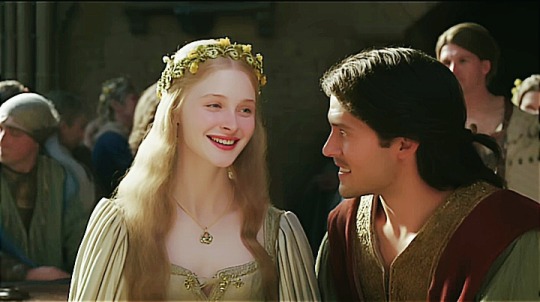
In spring 1372, shortly after John of Gaunt paraded Constance through London, he gifted Katherine a generous sum of money. This is the first record of his direct association with her, and it is likely that around this time she became his mistress. Katherine’s conveyance of the news of Princess Catalina’s birth to the King suggests that she had been in attendance; having borne at least four children of her own at a young age, she would have been able to reassure and support Constance through her ordeal. But as soon as her own pregnancy became obvious, a pregnancy that could not have been her husband’s doing, she would have been obliged to resign her post and return to Kettlethorpe.
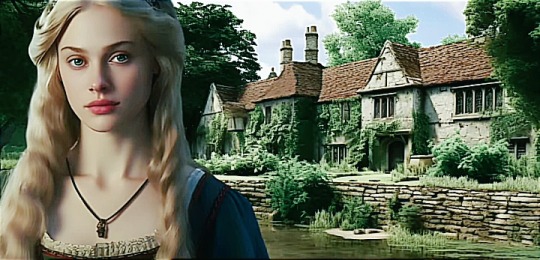
In 1373, the first son of the lovers couple, John, was born and given the surname Beaufort. Following his birth, John of Gaunt granted Katherine more money as well as a lucrative marriage agreement for her daughter Blanche. John Beaufort’s early years were probably spent at Kettlethorpe. The pattern of John’s grants to Katherine, some of them concerning its refurbishment, some of them handsome gifts, may indicate the dates of birth of their other children, and certainly suggests that the manor was being made a fit place for them to be brought up in. Kettlethorpe was a remote village with a tiny population, an ideal setting for discreet confinements and the raising of royal bastards whose existence was better kept secret – at least for the present.

Certainly the lovers were discreet, at least to begin with – had they not been, the world would soon have known of their affair, and we would not have to rely on inference and speculation in determining the circumstances in which it began. Costain argues that it was Katherine who insisted on secrecy in the early years of the liaison – she was, after all, newly widowed – but there were political imperatives to be considered too: John would not have wished to openly dishonour his new wife when all his hopes were centred on claiming the crown of Castile in her right. Thus the need for discretion was probably mutual, and it ensured that for some years to come, his affair with Katherine was conducted in secrecy and with great circumspection.
Sadly for those romantics who would prefer to believe that the Duke stayed true to Katherine within the limits of their adulterous relationship, there is some evidence that he had fleeting sexual encounters with other women during the course of it. In 1381, he was publicly to confess that he had committed the sin of lechery with Katherine herself ‘and many others in his wife’s household’. Probably John’s amours were fleeting and purely physical – and made no impact on his obviously deep feelings for Katherine Swynford.
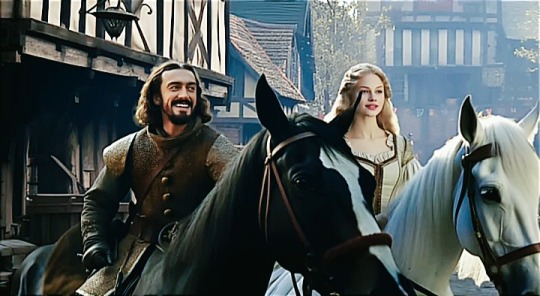
Yet it appears that the Duchess’s Castilian ladies were already aware in 1373 that Katherine was John’s mistress. Their gossiping so annoyed the Duke that he packed them all off to Nuneaton Abbey, hoping that the Abbess would teach them discretion. If her ladies knew what was going on between the Duke and Katherine, the chances are that Constance did too.
By 1375 Katherine's position of influence with the Duke was becoming public knowledge. Although there are very few known instances of her exercising any powers of patronage, the Leicester records show that she occasionally used her influence for the benefit of others, while there is evidence to suggest that if she did ask favours from the Duke, it was usually for her own family members.
The public and liberal relationship that Gaunt and Katherine enjoyed after 1377 was due to Gaunt’s shift in position after the death of Edward III. He was the uncle of King Richard II, the most powerful noble in the country, a Prince, and even a King himself; he was powerful enough to conduct the affair without fearing the consequences. Katherine accompanied John of Gaunt that summer as he toured his extensive Duchy lands – the towns and villages where he was most at ease and felt confident in the love of the people. It was certainly at the request of John of Gaunt, within weeks of Richard’s ascension, that Katherine was granted two wealthy manor estates for life, in exchange for Gaunt’s county of Richmond. This generous gift – at the cost of his own property – is testament to Gaunt’s respect and love for Katherine Swynford in the late 1370s.
Sources:
Alison Weir, KATHERINE SWYNFORD: THE STORY OF JOHN OF GAUNT AND HIS SCANDALOUS DUCHESS
Helen Carr, THE RED PRINCE: THE LIFE OF JOHN OF GAUNT, THE DUKE OF LANCASTER
Images from youtube's video:
youtube
#constance of castile#john of gaunt#katherine swynford#constanza de castilla#constanza of castile#geofrey chaucer#richard ii#hugh swynford#john beaufort#english history#lancaster#Youtube
10 notes
·
View notes
Text
Day 2: 1386
Engport | G | 4.2k
@engportevents
.
.
November came with dreadful weather, and Portugal would much rather have stayed in Lisbon beside a warm fire than ride all the way to the Galician border in the cold, in the rain and in the gusts of freezing wind. But a treaty was a treaty, and he was bound to honor it.
On the other side of the bridge, under red, gold and blue embroidered banners that presumptuously also included the Castilian coat of arms, stood the English delegation mounted on their horses, dripping wet and shivering, some looking green with sickness. He stretched on his horse to try to look among them, searching for a familiar face, blond hair darkened with water plastered to a youthful face and deep forest green eyes.
The river Mouro ran fast below them, and the Duke of Lancaster, possibly the future King of Castile if the war went their way, had the musicians start playing once he spotted the Portuguese delegation coming on the other side. The sound of fifes and drums was drowned and muffled under the curtain of rain, carried away by the freezing wind, but Portugal’s new King responded in kind, their white banners carrying their coat of arms in form of a shield standing tall and proud above them, and their King riding at the front, greeting the English Duke with an amicable shake of hands.
“Come, come, we have much to discuss,” the Duke said in faulty, heavy-accented Castilian, making sure to show the extent of his efforts in his endeavor to become the future King of Castile.
Portugal looked around to see if he could spot that one face he was looking for, but as they were escorted across the Galician border along the Minho River towards the town of Ourense, he failed to see him among the English nobles and knights.
-
It was only after they had settled in, their horses taken to the temporary stables set up by the English when they first occupied the city, and their immediate needs seen to, that he asked after his friend’s whereabouts.
“Little King Arthur will not be joining us on this enterprise?” his new King asked him in private after overhearing Portugal’s inquiry and watching with him as the servant Portugal had stopped to ask had shaken his head and scurried away as fast as their feet could take him, making Portugal huff out in annoyance and frustration.
Portugal did a double take at the man beside him, frowning. “Why call him—no, I mean, yes, your grace.” Portugal shook his head, trying to sort out his own thoughts. “In his last letter he said he would come. I don’t understand why he’s not here.”
The King hummed thoughtfully. “That is indeed a mystery.” Then he clapped him amicably on the shoulder. “Perhaps there is no one more capable of solving it than you, Gabriel,” he added with a wink. “But make sure not to do anything that could upset our hosts, hm? The ink is still wet on our treaty with the English, and I’d hate for dear Philippa to have to search for another husband.”
Portugal frowned at his King’s back as he walked away, going down the corridor towards their assigned quarters and leaving Portugal all alone in the cold stone corridors.
All alone with thoughts of mischief brewing on the back of his mind.
-
As night darkened outside, the shadows inside the stone corridors of the fortress grew longer, cloaking his presence as Portugal silently made his way into the English assigned quarters, coasting the walls and keeping the hood of his cloak over his face to conceal his presence. He followed the servant from earlier with cunning diligence, watching from the shadows as he went down to the kitchens to retrieve a pot of steaming water, then up two flights of stairs, careful not to make a sound as the young man turned a corner and fitted a key that he pulled from under his vests and into the lock of an unguarded room.
Portugal held his breath as he waited. If the servant was perhaps a little careless, he could steal the key once he passed by him on his way back to the stairs.
But as fortune would have it, there was no need. As the servant came out, his pot now empty of water, he let it fall out of his arms and the thing rolled noisily away, clunking and banging, providing a perfect cover for Portugal to slip inside the room while the young man swore under his breath and stomped his way to retrieve it.
The good news, he discovered once inside, was that the room truly was England’s as he had suspected and that his friend had indeed come to wage war following his Duke’s claim to the Castilian throne.
The bad news was that England currently laid on his bed very much dead.
-
England’s complexion was even paler than the time he died of the plague some years back. He was cold to the touch too, so Portugal estimated he must have been like this for quite some time. But his chest hadn’t yet caved in, nor his eyes seemed sunken when Portugal peeled back an eyelid to check. Perhaps in a day or two he would be back to his usual self, and, while a bother, it wasn’t the end of the world.
“You have the worst timing, my friend,” he told him in all seriousness, hands on his hips and lips crisped as he looked at England’s dead body on the bed.
Portugal, however, didn’t have much time to dwell on his mixed fortune, because the servant came back and he had to quickly dive under England’s bed, clamping a hand over his mouth to quieten his breathing.
“Arthur?” the man came into the room asking, bringing a candle with him and coming closer to the bed to inspect the body. “Did you say something? I could swear I heard something coming from inside the room, have God awaken you yet?”
The servant came closer still and the tips of his pointy shoes stepped on the end of Portugal’s cloak under the bed. When he tried to squirm away, he accidentally jerked his head back and smacked it up on the wooden frame of the bed, groaning on reflex.
“I knew it! You are awake!” the man exclaimed from above, happy and relieved, “I knew St. George would answer my prayers! I need to tell the Duke, this is such happy news!”
Footsteps hurried out of the room and Portugal stood frozen in place.
Fuck.
-
“I swear I heard him, he made a sound as if awakening!”
“Don’t be daft, Tenney, the boy has been out cold for days, what you probably heard was gas passing through his body.”
“Don’t blaspheme, Elric, I’m telling you what I saw!”
“You don’t know what you saw, with that weak candle of yours you could’ve seen the devil on that bed and wouldn’t have known the difference.”
“I heard him, Elric, I did! I saw him shift too, jump from his bed as if his soul was trying to come back to his body. I’m telling you!”
“Well, if that’s true then we have to report to the Duke and his knights, they’ll want to set a meeting with the Castilian commander to launch a formal declaration of war. Now that the Portuguese King has brought in his reinforcements we could finally be seeing some action after all this bloody waiting.”
The door opened and Portugal gathered the ends of his cloak away from the incoming light and voices. It would have been really helpful to know what they were saying, but England hadn’t had the chance to teach him his language yet.
Two pairs of long pointy shoes stood at the edge of his vision.
“Well, then?”
“I’m telling you what I saw, Elric, the boy was alive.”
“He looks dead to me.”
The two servants continued to quibble above him and one of them began to impatiently tap his foot, raising dust from the floor and sending it directly into Portugal’s face.
He pressed his eyes tightly shut, clamped his hand harder over his mouth and nose, but it was no use. As hard as he tried, the muffled sound of a sneeze still managed to squeeze through and the squabbling above him immediately stopped.
“Did you see that?”
“I…”
“I told you I wasn’t lying!”
“Jesus Christ on the cross, Tenney, shut the fuck up! Let me think!”
Portugal held his breath, going red in the face as he did.
“Arthur, is that really you? Are you back from the realm of the dead yet? Give us a sign if it’s really you.”
Seeing as it was impossible for him to hold his breath for much longer, Portugal was forced to let go of his mouth and nose with a distressed sound and gulp down much needed air.
“There! Did you see it this time! I definitely saw him take breath!”
“Calm yourself down, Tenney, Jesus. I didn’t see anything, I just heard some weird noise.”
“You asked him to give you a sign and he did!”
“He didn’t give me shit, bloke’s still dead, Tenney!”
The pair of feet started prancing around and Portugal’s heart was racing, mind frantically searching for a way out, wishing for a window when the two wouldn’t be looking so he could make a run for the door.
“Arthur, if you’re really back, do you want us to call the Duke?”
Portugal hated himself. He hated his life and every decision he made that got him to this place. But most of all, in that precise, exact moment, he hated England with all his might.
“Mmhm,” he intoned weakly, feeling incredibly stupid and supremely desperate, having no idea what he had just agreed to just really wanting to get rid of the two young men so he could jump out of the fucking window and be done with all his problems.
“Well, fuck me, little Arthur truly is back.”
“I told you!”
“We need to make arrangements right away. Tenney, you go to the stables and tell them we need a messenger on the ready, I need to inform the Duke. He’ll probably want to send for the Castilians right away.”
Portugal watched as the two hurried out of the room to fulfill their tasks.
After they were gone, leaving the door unlocked on their wake, he emerged from under the bed wide-eyed, hair in knots and with dust all over his face.
England was still very pale and very much dead when he looked at him.
“You owe me one for the rest of your life after this.”
-
“So, Gabriel,” his King started, welcoming him as Portugal entered his room the next morning with unsure feet, looking first at the guards posted by his King’s small meal table and coming gingerly closer to take a seat beside him. “The Duke of Lancaster informs me little King Arthur made a miraculous recovery from his illness during the night and that they have already sent for the Castilians for a meeting tomorrow. That is fortunate, wouldn’t you say so?”
Portugal shrugged, reaching with an unconfident hand for a piece of bread and not daring to raise his eyes from the table.
“I suppose the mystery of your friend’s whereabouts is finally solved then, right?”
“I guess,” Portugal mumbled, nibbling on the bread like a guilty little field mouse.
“And you wouldn’t have anything to do with any of it, right?”
He swallowed down a bite that went scratching down his throat, coughing and choking. His King gave him little pats on his back and served him a cup of water.
“Hey, now, don’t go swallowing without chewing,” the King admonished lightly. “I’m only asking because my future father-in-law asked for our presence this afternoon to go over our joint strategy against the Castilians. I don’t want any surprises.”
“Surprises?” Portugal croaked, voice cracking high at the last syllable, finally looking up to meet his King’s frown and confused stare, squinting his eyes back at him.
He stared back, forcing himself not to blink.
“You’re not hiding anything from me, are you, Gabriel?”
“… No,” he lied, and he immediately knew that the King knew that he knew that he was lying because his eyes squinted further into very thin slits.
“Well, we’ll see how today’s meeting goes,” he conceded, sitting back on his chair. “You may go get dressed.”
Portugal couldn’t think of any other time when he got up faster from a table, shoving the piece of bread in his hand into his mouth and looking down at his own two feet as he felt himself blushing violently, hurrying without running out of the room feeling the King’s and his guards’ eyes on him the entire way out.
-
“Come on, please wake up.”
England’s dead face stared back at him, unmoving and unspeaking. Portugal ran a frustrated hand over his head. He had tried everything he could think of. Splashed him with cold water, pinched his arms, peeled his eyes open and blew into them, put food in his mouth, put water in his mouth, pinched his cheeks until they were rosy pink, sat him up on the bed and held his arms up above his head.
All he accomplished was to feel absolutely ridiculous. And kind of a jerk to his friend.
“Come on, come on, come on,” he chanted, moving England’s hands in his in a rolling motion to see if it could warm up his blood. But it only managed to jolt his body until England’s head lolled down and his chin rested on his chest. Portugal growled in frustration and all but dumped his arms down to fall crossed over his lap, his spine slumping forward until Portugal caught him with a hand on his shoulder.
The door opened behind him and Portugal looked back wide-eye at the servant coming in.
It was a girl holding a bucket of water against her hip. She looked just as surprise to see him there as Portugal was.
“Uhm,” she started, looking between him and England, her lips twisted to the side. “They ordered me to give him a scrub,” she said, but Portugal didn’t speak English, so he just frowned at her. She frowned back. “Are you here to help me undress him?”
“Que?”
“You can hold him up while I get his shirt, then,” she directed, coming in and setting her bucket down. “And then we’ll do the pants.”
Portugal watched frozen into silence as the girl proceeded to peel England off his clothes in front of him, baring his naked chest where sparse tufts of soft blond hair has began growing around his nipples and navel. He felt bright hot red rise from his neck and flood his cheeks, eyes falling down to where the girl was undoing the strings on England’s pants with quick efficiency and pulling them off in two, three rough jerks, revealing pale naked legs and—
Portugal looked up at the ceiling and bit his lips.
He dared not to look down until the girl said something else in her language that probably meant she was done.
-
“He’s quite the heavy sleeper, isn’t he? Slept all through the Duke’s speech.”
Portugal gave a forced smile to the noble knight in front of him. England’s inert head laid slumped down over his chest in his seat beside him, the fresh clothes they had put on him and the pinches Portugal had given his cheeks gave him a livelier look, but if anyone dared to look any closer it would be obvious that he was very much still dead.
“It takes a heavy toll on the body to, ahm, recover from such illness,” he lied through very teeth, but the noble knight winced at the mention of illness and made a face of disgust.
“He’s not… contagious, is he?”
That was an opening Portugal hadn’t expected, but he one that he was quick to seize.
“He could be, better not come too close. I of course can because I have already recovered from such illness and am therefore immune.”
The noble knight raised his eyebrows and nodded in partial understanding. “I see,” he said, but he didn’t look like he saw anything. Portugal was glad when he went away after that.
“And what illness would that be?” his King whispered to him as he leaned down to speak against his ear, and Portugal felt his spine go rigid.
“It’s, ahm… A very serious one,” he said stiffly, cold sweat gathering on the back of his neck. “It’s also very new.”
“That sounds very dangerous,” his King pulled back to say a little louder, so his voice could reach the Duke nearby. “Perhaps, Arthur could be excused from negotiations with the Castilians tomorrow to continue his recovery until he is fit for the upcoming battles.”
Portugal’s eyes rose to look at his King, and in that instant he felt so grateful and relieved he almost cried.
“Nonsense!” the Duke of Lancaster exclaimed coming closer, he clapped England hard on his shoulder and his body jolted, eyelids trembling. “All this boy needs is a cup of strong ale and a good night’s sleep, and he’ll be brand new. I want the Castilians to fear our combined strength.”
England head lolled lifelessly onto Portugal’s shoulder and Portugal forced a smile at the English Duke.
“Ah, friendship! There’s nothing quite like it in this world, wouldn’t you agree, Master of Aviz?”
“Yes,” his King was quick to join in, looking at the distressed call for help written in Portugal’s eyes and putting a hand on the English Duke’s shoulder. “Speaking of which, your grace, do you perhaps have a moment to tell me news of Philippa?”
“Oh, yes, your future bride!” the Duke exclaimed heartily, letting himself be led away. “In her last letter she spoke of reading the latest writings of Chaucer, I must have them translated for you, João, so the two of you will have something to talk about.”
Portugal let out air he hadn’t known he was holding as he watched the two walk away.
He glanced at England’s head on his shoulder, his lips smashed against the fabric of his clothes and hair askew. Gently, he straightened him up as best he could, but didn’t move him away. It felt quite nice actually, despite England being dead.
-
How his King roped the English into allowing him to bring England into his chambers for the night was something of a feat. After telling them they possessed a special kind of medicine that had proven effective against that kind of illness but that it could only be administered at night and in the early hours of morning, so it would be more convenient if they just let Arthur sleep in the same chamber as Gabriel, the English had more or less just looked at one another and shrugged, letting Portugal drag England’s unmoving body with his arm slung across Portugal’s shoulder and all of his weight propped against his side all the way back to his room.
He was sweating by the time he got him into his bed, arranging all of England’s limbs on the mattress before unlacing his shoes.
“I’m not undressing you ever again,” he swore to his friend’s dead body, fighting flashes of memories and the creeping blush climbing up his cheeks. Instead, he covered him with a blanket and placed a chair beside him, where he then sat down and crossed his arms, glaring at England on the bed.
“You can’t ever, ever, say I never do anything for you after this. Ever.”
England didn’t respond.
Portugal huffed and slumped down on himself, watching over him through the night.
-
He dreamt of a battlefield. Castile yielding his sword on top of a horse one on side, himself and England on the other. England laid in full armor on the ground, dead and unmoving, while his own armor was missing, he had forgotten to put it on that morning before battle and he stood now naked with no weapon while Castile charged at him.
Have you tried giving him honey?, France asked, sitting on top of a boulder and inspecting his nails. Honey always works.
Portugal opened his mouth to retort, but when he turned around Castile was right in front of him and Portugal was naked, and then—
“Not my balls!” he woke up exclaiming, hands flying in front of him to secure his lap.
He blinked at the morning light shinning through the window, blinking down at his hands cupping his prized possessions, blinking at England dead on the bed.
And then jumped upright and ran downstairs to grab some honey.
-
By the time the Castilian delegation was announced, England’s chest had already began rising and falling slowly. Too slowly for him to be awake yet, but Portugal had hope. The Duke of Lancaster had been adamant that Arthur be present for the meeting, and so Portugal held him more or less upright beside him in one corner of the room, one arm firmly wound around the back of his waist, giving his King a shaky thumbs up that the man received with a deep frown before righting himself and facing the upcoming enemy delegation.
Castile came in beside his commander in all of his tall, broad-shoulder, dark-haired and olive-eyed glory, glancing around the room until he spotted Portugal in the corner, squinting at his closeness with England with a snarl. His nose was still very much broken and bent from when Portugal had crushed it during Aljubarrota the year before.
He couldn’t fool Castile like he could the others, sooner or later he would see through Portugal’s deception. If he looked any closer, he would know.
His brother glared at him all throughout negotiations, not even paying attention to what was being said, treating the Duke of Lancaster’s claim as something so easily dismissible he wouldn’t even look the man in the eye to acknowledge it. The Duke in turn took that with great offense, conversation growing more stilted and tense as it went on.
When it was finally done, Portugal could feel the electricity in the air as the Castilians rose and proceeded out of the room with a promise of war having been sealed and settled in no uncertain terms. Castile, however, parted from his knights and commander to make a beeline for him, and suddenly Portugal felt very naked like in his dream. His knees locked to keep England from falling off, with no real weapon on him to protect himself if Castile tried something. Out the corner of his eye, he saw his King get up from the table a moment too late, eying them with concern, but then Castile was right in front of him, grabbing Portugal by the front of his tunic, breathing down hard and nostrils flaring.
“Unhand him now.”
Castile turned first, but Portugal felt his heart skipping a beat at hearing England’s first words in days, his voice hoarse and scratchy, and he looked to the side with a flood of relief to find his friend with his eyes very much open and alive, a hand on the hilt of his sword on his hip, weight better distributed on his feet under him.
The Castilian commander called his brother back and Castile’s fingers reluctantly uncurled from Portugal’s clothes. His brother still gave them one last glare over his shoulder, but then he was gone without a word, leaving the audience chamber with heavy steps.
After the doors closed behind his delegation, Portugal felt so relieved it was all over his knees almost gave out from under him, but a firm hand on his hip prevented him from falling flat on his face.
“Don’t go falling on me, Port,” England said, and Portugal felt ridiculously light-headed and so genuinely happy to hear his stupid voice he felt like he could kiss him right on the lips in front of the King, the Duke and everyone else. But then he caught himself, coughing into his fist and quickly untangling himself from his friend, feeling his neck and cheeks and ears turn pink with embarrassment.
“Yeah, no, yeah,” he mumbled, forcing out a nervous chuckle, running a hand down his arm. “I wouldn’t want to do that.”
From the main table, he heard someone clearing his throat into their fist. “Well, that was productive,” his King said, followed by various murmured assents and a conversation on what the Castilians could do now that the allied Anglo-Portuguese forces had presented their claims and intentions, and how they could fortify their position against a possible incoming attack, his King skillfully averting their attentions from the fumbling teenagers in the corner.
England blinked at the scene and then at himself, patting his own chest and checking his own breathing with a finger under his nose.
“Hey, Port,” England called quietly, and Portugal mm’d in question, watching him scratch the back of his neck in thought, frowning down at his own body. “Do you care to explain why—?”
He held a hand in front of England’s face and made him stop talking, feeling all of his muscles tired and his mind exhausted from the accumulated stress of the last two days.
“Later. I promise. I’ll tell you everything later. All I’m going to say now is that you owe me big time for dying on me like that.”
England’s face split into a broad grin and he laughed.
Portugal felt so damn happy at the sound of it he almost kissed him again.
.
Notes: On November, 1386, seven months after England and Portugal signed the Anglo-Portuguese Treaty, John of Gaunt, the Duke of Lancaster, went to Galicia with the intent to wage war against the Castilians and claim the Castilian throne on behalf of his wife’s (Constance of Castile) inheritance. He was aided by his future son-in-law, the Portuguese King João I. Despite this, their venture was unsuccessful.
#engportweekevent#engportweek#engport#hws england#hws portugal#historical hetalia#hetalia#fics that could easily be 50k if I dedicated more than half a day to it#make no mistake despite the serious beginning this is very much a weekend at bernie's spoof#a wild fic appears
39 notes
·
View notes
Text

“Queen Philippa of Lancaster and King John I love story is the best out of all the portuguese royal couples. Their sons and daughter also make an amazing group! Love the Avis' Family to bits❤️❤️❤️” - Submitted by Anonymous
17 notes
·
View notes
Note
Hello my friend
Can you draw Philippa of Lancaster and
John I of Portugal
Okay, But it might take a while, I have a lot of requests at the moment. I had to finish my other art first.
4 notes
·
View notes